City Information
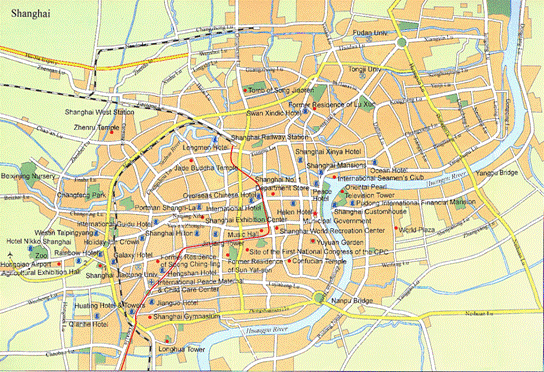
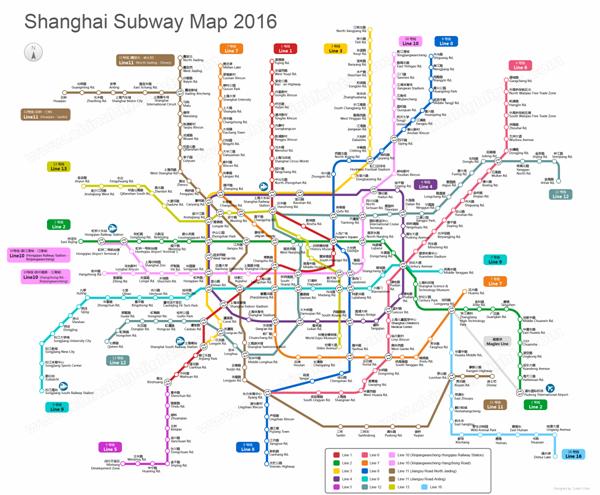
As the largest city in China and an economic, commercial and financial center, Shanghai is vital to the country's future. No other city in the country is more vibrant and fascinating or has such a unique colonial past.
Shanghai is an important economic, financial, trade and shipping center in China. It contributes greatly to the whole nation's economic structure and the development of society.
Due to its excellent port, Shanghai has been a leading power of China's economic and trade development since ancient times. Since China's reform in 1978, it has had a more open environment and enjoys faster development especially since 2000. Its economy has increased by over 10% for 15 consecutive years.
Taking up only 0.06% of the country's land area, Shanghai now generates about 8.3% of China's gross industrial output value, 10% of its ports' cargo-throughput, 25% of the total value of the country's imports and exports and 12.5% of the total revenue of China.
Industry and Architectural Industry
The great leap of Shanghai's economy benefited from the amazingly fast development of industry. In the past the city gave priority to advanced manufacturing industries and promoted the construction of its industrial base and large projects. The manufacture of automobiles, electronic and communication equipment, petrochemicals, steel products, equipment assemblies and biomedicine had once been promoted as the six pillar-industries of Shanghai.
Shanghai still pays much attention to its industry. There are many industrial areas here such as Jinqiao Export Processing Zone in Pudong New Area, Zhangjiang Hi-Tech Park and some other processing zones in Jiading, Qingpu, Songjiang and Minhang Districts. As a result the city's industrial production continues to grow rapidly. There is no doubt that industry makes a lot of economic profit; however, it is much more costly to the environment.
Shanghai SkyscrapersThe architectural industry has also developed quickly in the area. The construction of airports, railways, highways, expressways, subways, maglev lines, ports, bridges and tunnels forms a convenient transportation network. Various commercial buildings, residential buildings and other infrastructure in the city create an open and pleasant environment for investment and further development.
Other Industries
Other booming industries, especially the service industries, contribute a lot to the city's economy. In recent years the financial market system has gradually matured, providing citizens and tourists with improved services. Domestic and international trade also has developed quickly. The Lujiazui Finance and Trade Zone in Pudong is now becoming more and more influential. It brings together many financial and commercial institutions such as stock exchanges, securities companies and insurance companies, both Chinese and foreign.
Transportation, especially the subway system in this city, is developing vigorously, providing sufficient transport capability and good services. The prosperous postal services, communications and information industries facilitate daily communication among people.
Various other service industries are booming here, so that the living standards of its citizens are improved. These include catering, hotel, entertainment, tourism, real estate, education, culture, health, physical training, TV and broadcast, consultation and information services, technology services, public utilities and social welfare.
Shanghainese Economy: Present & Future
The good national policy of reform and opening up sped up Shanghai's development. The city's economic growth has maintained a very high level for many years. The income of the locals has increased and the standard of living improved.
However, underlying problems can not be ignored. The growth of economy is too dependent on manufacturing, especially heavy industry, which usually demands much more land and energy, often seriously polluting the environment. Other business segments such as the service industries occupy only a small portion of the industrial structure of the city. If the situation continues, it will unbalance or even damage the economy.
To solve the problem, Shanghai will continue to make efforts to transform the industrial structure and promote the advancement of service industries. Six new pillar-industries have been selected: information industry, financial services, commerce and trade, automobile manufacture, equipment assemblies and real estate. It is obvious that the city tends to accelerate the high-tech and service industries.
Shanghai History:
Shanghai,whose name means “by the sea” began as a quite fishing village in the 11 century. For centuries Shanghai existed as a small village supported by fishing and textiles. But Shanghai’s destiny was to become one of the greatest cities in the world, “the Paris of the East”. Shanghai’s location made it the gateway to the Chang Jiang, the Yanzi River, China's main waterway, which completes its 5,500-km (3,400-mi) journey to the Pacific at Shanghai. By 1853 Shanghai had become the largest port in China. By 1900 the sleeping fishing village had swelled from fifty thousand to one million. By the early 1900’s Shanghai was the busiest port in all of Asia. Because of Shanghai’s long and historical past, it is a mixture of incredible cultural landmarks. Shanghai mixes a living museum of centuries-old cultural landmarks, with historic architecture of China, Britain and European influence. The result is a modern city with mystical roots, pockets of narrow back streets, and an old world feel that no other city in Asia quite matches.
In the 13Th century Shanghai and the surrounding area grew into one of the richest areas in China because of cotton. Cotton flowed across the Shanghai region creating a white river of wealth that continued for centuries. During the period of Southern Song Dynasty, Shanghai became very important as a port. In 1292, it became an administrative county, and in the Ming Dynasty (1368-1644), it became the center of China's textile and handicraft industry. It was here that the first factory was built in history.
During the time of Opium War in the 19th century, due to the defeat of the corrupted Qing government, China was forced to sigh a series of unjust and humiliating treaties, which opened a new era of China’s backwardness and humiliation such as Treaty of Nanjing, Treaty of the Bogue, Sino-American Treaty of Wangsia. After the first Opium War the British named Shanghai a treaty port, opening the city to foreign involvement. Shanghai turned into a city carved up into autonomous concessions administered concurrently by the British, French, and Americans, all independent of Chinese law. Each colonial presence brought with it its particular culture, architecture, and society.
Shanghai’s beauty and grandeur was built on the backs of Chinese who were worked as near slaves or actual slaves. The Bund which was the center of this exploitation and at the north-western end by the British Public Gardens, for decades had at its entrance no Chinese and No Dogs allowed along with a list of other unwanted. But many native Chinese residents still chose to live in the foreign settlements. Thus began a mixing of cultures that shaped Shanghai's openness to Western influence. Shanghai became an important industrial center and trading port that attracted not only foreign businesspeople (60,000 by the 1930s) but also Chinese migrants from other parts of the country.
The Paris of the East became known as a place of vice and indulgence. Amid this glamor and degradation the Communist Party held its first meeting in 1921. In the 1930s and 40s, the city weathered raids, invasions, then outright occupation by the Japanese. The party was over. By 1943, at the height of World War II, most foreigners had fled and the concessions had been ceded to the Japanese, bringing Shanghai's 101 years as a treaty port to a close. Despite the war's end, fighting continued as Nationalists and Communists fought a three-year civil war for control of China. The Communists declared victory in 1949 and established the People's Republic of China, after which the few remaining foreigners left the country.
After 1840 the British Army entered Shanghai and opened it as a treaty port in 1843. Many other countries set up concessions there. They sought industrial raw materials and dumped superfluous goods there. At that time it became an 'Adventurer's Paradise' and many countries set up enterprises in industries of shipping, banking, printing, pharmacy, architecture and public utilities. Meanwhile the Qing government also set up many enterprises here to promote national industries and commerce.
In 1912 Shanghai's land area grew to today's size, under the jurisdiction of Jiangsu Province. The First National Congress of the Communist Party of China was held there in July 1921. The area was renamed Songhu City in 1925, and in 1927, Shanghai City was officially established, directly under the Executive of Government of the Republic of China.
In the late 1920s and early 1930s modern industry developed quickly in this area. A large number of enterprises, advanced techniques and equipment and systematic factory management insured the city's position as an important base of modern industry in China as well as the shipping, financial and trade center of the Far East.
After a prosperous period, the city started to suffer from World War II. The lack of raw material resulted in declining industry and economy, the lack of daily necessities and severe inflation.
Postwar resettlement did not go well. Important industries such as electricity generating, shipbuilding, shipping, finance and trade were controlled by international monopolies. Meanwhile domestic bureaucracies dominated the main economic departments in Shanghai. The situation of inflation and economic crisis was getting even worse.
Contemporary Shanghai
Old area of ShanghaiIn May 1949 Shanghai was liberated. It became a municipality directly under the Central Government on Oct 1 of 1949, and began to revive. Besides regaining its position as a shipping, industrial and economic center, the city became the science and technology base of China.
After China's reform and opening-up in 1978, Shanghai greatly benefited from the favorable national policies and its own advantages. With the reform and restructuring of the economic system, the city developed its indigenous economy and the living standard of the people improved. Open-minded introduction of foreign capital, advanced foreign technologies and management methods speeded up its development. Nowadays the international metropolis of the city is an influential economic power in the world and undoubtedly an economic, financial, trade, cultural, science and technology center of China.
Revolutionary History of Shanghai: Shanghai is a city with a glorious revolutionary history. Many revolutionary activities have left behind precious relics and sites. They include the site for the first national congress of the Communist Party of China; the residence of Dr. Sun Yat-sen and his wife Madame Soong Qing Ling; the former residence of late Chairman Mao Zedong, the former residence of Zhou Enlai, the first premier of the People's Republic of China and that of Lu Xun, a great Chinese writer.
-- Site of the first National Congress of the Communist Party of China Situated at No. 76-78 Xingye Road, this is the birth place of the Communist Party of China and is now under the state protection. The two houses with stone gates are typical Shanghai residences in the 1920s. The first national congress of the Party was convened in one of the sitting room on the ground floor on July 23, 1921. Now, the furniture in the sitting room is replica. There are also wax statues of participants in the congress, precious documents and other exhibits, recording the historic period of the beginning of the Party and its activities in the following years.
Site of 2nd National Congress of the Communist Party of China Located at No. 30 Lane 7 on today’s Chengdu Road N., the two-story shikumen building has been placed on the list of relics under city-level protection. July 16-23, 1922, saw the 2nd National Congress of the Communist Party of China convene its first session at the living on the first floor. Furniture in the meeting living room is replicas. Hundreds of exhibits on show at the site feature Party constitution and Party Program passed at the meeting and other documents recording revolutionary activities after the Party was born.
-- Residence of Dr. Sun Yat-sen No.7 Xiangshan Road is the address of the residence, which was bought by some Chinese living then in Canada for Dr. Sun to support his revolutionary activities. Dr. Sun lived in this house in 1920-24. In 1961, it was listed as an important historical site under state protection. During his stay here, Dr. Sun reformed the Kuomingtang and entered the first round of cooperation with the Communist Party of China. In addition, he had written several books in this house. Now, articles on display in this residence include the sword, military maps and writing tools once used by Dr. Sun.
-- Residence of Mao Zedong Mao’s former residence is an old-style, two-storey building with a stone-framed gate, located at Yulanfang, Weihaiwei Road (today’s No.7, Lane 583, Weihai Road). In mid-February 1924, when Mao was the secretary of the CPC Central Bureau and an official of the Koumintang Shanghai branch, he lived in this house. Today, the building is listed as a historical site under the city’s protection. (http://www.shanghai.gov.cn/shanghai/node17256/node17432/node17448/userobject22ai22055.html)
Revolutionary History of Shanghai - May Thirtieth Movement 五卅运动 (1925):
In the early 1920s, China was seething with progressive movements emerging out of the May Fourth Movement of 1919. Around 1924, organizers from the CCP and the GMD joined forces with workers to set off a strike wave. In 1925, nationwide anti-imperialist sentiments were added to an already explosive mix of restiveness.
These elements coalesced in the May 30 Incident that gave rise to the May 30th Movement (五卅运动, Wusa Yundong) of 1925. It all started in early 1925 in Shanghai, when a Japanese-owned cotton mill replaced forty male workers with young female workers. This led to a strike in 22 Japanese factories that eventually ended. By mid-May, however, new strikes were called after a Chinese worker, Gu Zhenghong, was killed by a Japanese foreman. Tensions grew after 24 May, when a large public memorial service was held for the murdered worker. On 30 May, a Communist-supported demonstration made up of students was held on Nanjing Lu, in the middle of Shanghai’s International Settlement; demonstrations of any kind were officially prohibited here. In the ensuing skirmish, Chinese and Sikh police constables opened fire, killing thirteen and wounding over fifty. As a result, general strikes were called in Shanghai and Guangzhou; demonstrations and anti-foreign boycotts were organized in other cities; and from all over the world the British action was condemned.
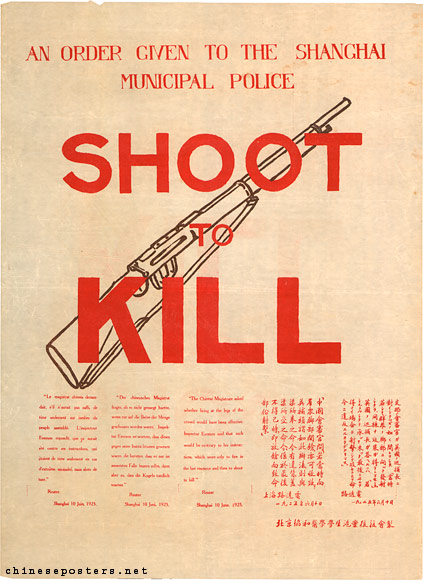
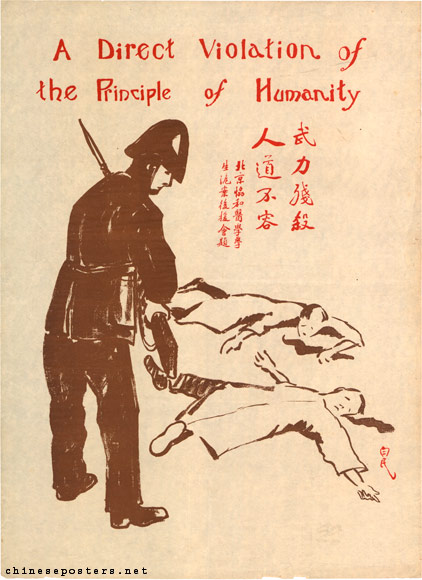
It should be pointed out that the death of Gu the factory worker did not lead to the same reaction as the deaths of the unarmed students. In the months following, student associations, merchant groups and workers’ organizations produced pamphlets and organized street lectures, rallies and memorial services. On 3 June 1925, for example, 30,000 Beijing students left their classes to demonstrate. During the summer, students and workers from time to time threatened to take over the streets of urban China. By August, the movement was suppressed at the national level.
The two posters shown above were issued by the Beijing Xiehe Yixue Xuesheng Hu'an Houyuanhui (Beijing United Medical Students Association in Support of the Shanghai Incident). They seem to have been meant to raise awareness and support among the international community in Beijing. (http://chineseposters.net/themes/may-thirtieth-movement.php)
The Shanghai Massacre:
In April 1927 Guomindang forces, aided by urban gangsters and warlord militia, attacked members of the Chinese Communist Party (CCP) in Shanghai. Hundreds of communists were rounded up, arrested and tortured; most were executed or assassinated. The Shanghai Massacre or ‘April 12th Incident’, as it is sometimes called, was a pivotal moment in the Chinese Revolution. It triggered a nationwide purge of communists from the Guomindang and years of anti-communist violence, dubbed the ‘White Terror’. Surviving communists were either forced underground or into rural and provincial areas outside Guomindang control. The events of April 1927 marked the end of the First United Front between the CCP and Guomindang, and the end of Soviet Russian support for the Nationalists. The CCP leadership was forced to reassess its revolutionary strategy. Many historians consider this the starting point of the Chinese Civil War.
When Sun Yixian died in March 1925, nominal leadership of the Guomindang passed to Sun’s ideological protege Wang Jingwei, a member of the party’s left wing. Though not seen as a significant political leader, Jiang Jieshi exerted considerable influence because of his military leadership. In June 1926 right wing power brokers in the Guomindang organised Jiang’s elevation to commander-in-chief of the National Revolutionary Army (NRA). The following month the NRA embarked on the Northern Expedition, an ambitious campaign to suppress warlords in northern China to achieve Sun Yixian’s dream of reunification. The first phase of the Northern Expedition (1926-27) was generally successful. The NRA was well trained and organised, competently led by Huangpu graduates and equipped with Russian and German weapons. It also enjoyed the support of Chinese civilians who were fed up with warlord rule. Unwanted, outnumbered and outgunned, many warlords capitulated and agreed to align with the Guomindang. Their private armies were dissolved or absorbed into the NRA. By the spring of 1927 Nationalist regiments had captured Wuhan, Shanghai and Nanjing, while the total number of NRA troops had swelled from over 100,000 to around 250,000.
The NRA’s successful northern advance also exposed divisions and tensions in the Guomindang hierarchy. The Northern Expedition highlighted the importance of military leadership, allowing Jiang Jieshi to present as an alternative leader. In January 1927 Wang Jingwei asserted his authority by forming a new civilian national government in Wuhan, away from Jiang Jieshi’s military power base in the south. Jiang responded by lobbying to have the capital shifted from Wuhan to Nanchang, the location of his military headquarters. As their leaders bickered over who should rule and where, the left and right wing factions of the Guomindang began to separate. In April 1927 Jiang’s forces captured Nanjing and Jiang formed a rival government to the one in Wuhan. Jiang declared that Wang Jingwei’s government had been infiltrated by communists and was no longer representative of the Guomindang. He followed this with an arrest order for 197 suspected communists within the party. The leftists in Wuhan condemned Jiang as a power mad militarist, possessed by “the ghost of Yuan Shikai”. Both factions considered pausing their anti-warlord operations in the north to attack the other – however they chose to maintain the Northern Expedition, each hoping to gain advantage over the other by capturing Beijing first.
As the rival Guomindang governments in Wuhan and Nanjing embarked on a power struggle, trouble was also brewing in Shanghai, the home base of the CCP leadership. In the first weeks of 1927 CCP leaders Chen Duxiu and Zhou Enlai, backed by advice from the Comintern, organised three insurrections in Shanghai. In late March 1927 the third and largest of these uprisings removed the Zhili warlord, Sun Chuanfang, from power. Nationalist forces loyal to Jiang Jieshi entered Shanghai shortly after and took control of the city. The two Guomindang governments responded differently to the events in Shanghai. The left wing Wuhan leader, Wang Jingwei, travelled to the city and met with communist leaders. He congratulated them on gaining control of Shanghai for the nationalist government, affirming the collaboration between the CCP and Guomindang. Jiang Jieshi’s faction, however, condemned the CCP’s uprising in Shanghai as presumptive and anti-revolutionary. The right-wing of the Guomindang began mobilising to purge the party of communists.
Shanghai massacre, Guomindang police arrest suspected communists in Shanghai in 1927
Anti-communist action in Shanghai commenced the day after Wang Jingwei’s departure from the city. On April 6th Jiang’s nationalist forces ordered the closure of Shanghai’s political bureau, a temporary municipal government set up by the CCP. Three days later Jiang declared martial law, citing a need to restore order, halt spontaneous violence and end wildcat labour strikes. As Jiang was taking this overt action he was also negotiating with members of Shanghai’s notorious Green Gang. The Green Gang was a shady network of secret societies, gangsters and opium smugglers, some of whom had concealed and supported Jiang in the mid-1910s when he was a fugitive from Yuan Shikai. Now Jiang mobilised the Green Gang against the communists in Shanghai, equipping them with weapons and Guomindang uniforms. Green Gang members began surveilling CCP officials and union officials. On April 11th Jiang issued a secret directive to Guomindang leaders in Shanghai, ordering a purge of communists. At dawn the following day Green Gang members began attacking striking workers. With the tacit support of Shanghai’s businessmen and Westerners in the city’s foreign concessions, Guomindang soldiers attacked CCP buildings and safe houses, murdering notable communists and union leaders, and arresting dissident workers. When a mob of students and industrial workers gathered to protest this violence they too were fired upon by Guomindang soldiers, causing more than 100 deaths.
Over the next month the Guomindang continued its purge of communists, both in Shanghai and wherever else it held power. This campaign, later dubbed the White Terror, caused the deaths of between 5,000 (Guomindang government figures) and almost 50,000 (CCP figures) communists. An independent source claims that 12,000 communists were killed or vanished in a three-week period. As many as 4,000 were killed in Shanghai alone. The highest profile victim of the White Terror was Li Dazhao, a co-founder of the CCP. Li was captured during a raid on the Soviet embassy in Beijing and executed on April 28th. Zhou Enlai was also captured and faced summary execution, however a Guomindang officer recognised Zhou from his time as a lecturer at Huangpu and allowed his release. Hundreds of communists went into hiding in the foreign concessions in Shanghai, Canton and Hong Kong, only to be murdered or kidnapped by Guomindang-aligned gangsters. Some reports also suggest that Jiang Jieshi’s men used the White Terror to raise funds, either by confiscating property or extorting ‘donations’ from wealthy businessmen in Shanghai. The events of April 1927 prompted the Comintern [Communist International] to break ties with the Guomindang. It also triggered in-fighting between communists and left wing nationalists in Wuhan that contributed to the collapse of Wang Jingwei’s government there. Thousands of communists remained underground in the cities or dispersed to rural areas. Some attempted to fight back. In August rebellious army units, led by Zhou Enlai, Zhu De and He Long, occupied Nanchang for several days before being driven out by the Guomindang army. By late summer 1927 Jiang Jieshi had emerged as the dominant republican leader of China. (http://alphahistory.com/chineserevolution/shanghai-massacre/)
1) The Bund
外滩
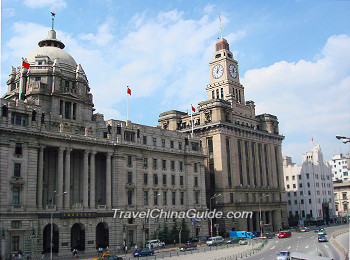
The Bund, also called Zhongshan Dong Yi Lu (East Zhongshan 1st Road), is a famous waterfront and regarded as the symbol of Shanghai for hundreds of years. It is on the west bank of Huangpu River from the Waibaidu Bridge to Nanpu Bridge and winds 1500 meters (0.93 mile) in length. The most famous and attractive sight which is at the west side of the Bund are the 26 various buildings of different architectural styles including Gothic, Baroque, Romanesque, Classicism and the Renaissance. The 1,700-meters (1,859 yards) long flood-control wall, known as 'the lovers' wall', located on the side of Huangpu River from Huangpu Park to Xinkai River and once was the most romantic corner in Shanghai in the last century. After renovation, the monotone concrete buildings that lovers leaned against in the past have been improved into hollowed-out railings full of romantic atmosphere. Standing by the railings, visitors can have a 'snap-shot' view of the scenery of Pudong Area and Huangpu River.
Before the 1840s, the Bund was a muddy narrow lane with tall reeds. It initially became a British settlement. After Shanghai was established as the trading port in 1846, a street was paved there and the riversides were reinforced. Then, rows of commercial buildings were constructed. As the UK Concession, a building boom at the end of 19th century and beginning of 20th century led to the Bund becoming a major financial hub of East Asia. It was the centre of the city's politics, economy and culture more than a hundred years ago, consulates of most countries and many banks, businesses and newspaper offices were settled there, and that's why we have these art-like buildings.

In the late 1970s and early 1980s, with the thawing of economic policy in the People's Republic of China, buildings on the Bund were gradually returned to their former uses. Government institutions were moved out in favor of financial institutions, while hotels resumed trading as such.
In the 1990s the Shanghai government attempted to promote an extended concept of the Bund to boost tourism and land values in nearby areas, as well as to reconcile the promotion of 'colonial relics' with Socialist ideology. From 2008, a major reconfiguration of traffic flow along the Bund was carried out. After a 33-month upgrade, the Bund was reopened to visitors on March 28, 2010. The veil on the new Bund was finally lifted.
After the reconstruction, most transit vehicles which originally got through the ground level roads began to make their way through the new underground tunnel. The original eleven driveways on the Bund ground were compressed into four two-way lanes. Thus more space was left for expending the four major squares: Huangpu Park, Chen Yi Square, the Bund Financial Square, and the Observatory Plaza. After being reconstructed, the new Bund waterfront is neat and atmospheric. The public activity space is expansive embracing more visitors.
The Bund has been called a 'museum of international architecture' and indeed it was and still is. But it was also much more. Here were located the banks, hotels, exclusive clubs, press organizations and headquarters of international concerns. The twenty-six major structures, of various heights along approximately 1.5 kilometers of Zhongshan Lu and the Huangpu River, have changed little externally since the 1930s. All were constructed in western-inspired styles. After the establishment of the People's Republic of China in 1949 the old tenants were gone. They had already been impacted by the wartime crises. Many of the structures were subdivided into government offices, department stores or storage areas. Furnishings were sold off or destroyed, and architectural features covered.
2) Site of the first National Congress of the Communist Party of China
中国共产党第一次全国代表大会会址纪念馆
http://www.zgyd1921.com/
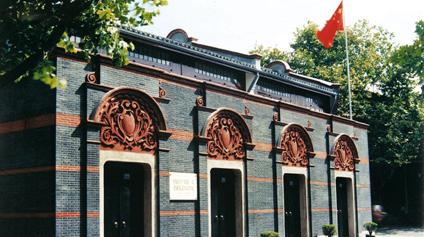
Situated at No. 76-78 Xingye Road, this is the birth place of the Communist Party of China and is now under the state protection. The two houses with stone gates are typical Shanghai residences in the 1920s. The first national congress of the Party was convened in one of the sitting room on the ground floor on July 23, 1921. Now, the furniture in the sitting room is replica. There are also wax statues of participants in the congress, precious documents and other exhibits, recording the historic period of the beginning of the Party and its activities in the following years. (http://www.shanghai.gov.cn/shanghai/node17256/node17432/node17448/userobject22ai22055.html)
3) Shanghai Sihang Warehouse Battle Memorial
四行仓库抗战纪念馆
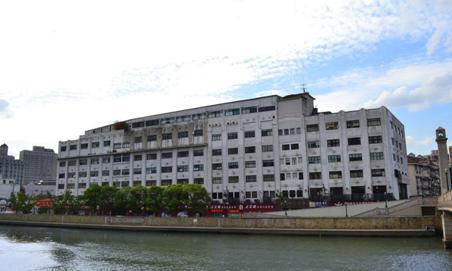
The important site at Shanghai for Chinese military against Japanese invading troop at October 1937, their heroic story, and later detained and betrayed by the foreign concession in Shanghai, is well known in China. After being closed for renovation for a year, the Shanghai Sihang Warehouse Memorial Museum opened to the public.
In October 1937, more than 420 officers and soldiers were ordered to keep the Japanese soldiers away from the Sihang Warehouse by the Suzhou Creek. They were also known as the "800 warriors," as they reported exaggerated numbers to confuse the Japanese. Xie Jimin, son of the group's commander Xie Jinyuan, said his father was just doing what a solider should do for the country. (http://www.wtoutiao.com/p/sbdpm1.html)
The Shanghai Songhu Anti-Japanese Campaign Memorial Hall in Baoshan District is one of several buildings reopened on August 13, 2015 to mark the 70th anniversary of the end of World War II and the War against Japanese Aggression, authorities said yesterday.
The 12-story hall has been closed for renovation since January 28, which itself marked the 83rd anniversary of Japanese forces first attacking Shanghai, said Yan Shuang, director of a working group established to manage the commemoration of the two conflicts.
August 13 is a significant date as it will be the 78th anniversary of the second invasion of Shanghai by Japan. The conflict was one of the bloodiest campaigns in the entire war, Yan said.
More than 300,000 Chinese soldiers were killed or wounded in the campaign, while Japan’s casualties numbered 40,000, he said.
Since its opening in 2000, the memorial hall has attracted more than 3.5 million visitors and was last year named as one of China’s top 80 venues related to the War against Japanese Aggression
“Despite its popularity, it was too small and needed upgrading,” Yan said.
The hall is located in Linjiang Park, which itself is undergoing a process of renovation and will also reopen on August 13.
To celebrate the revamp, the green space will be renamed Songhu Anti-Japanese Campaign Park and will feature about 1,000 exhibits — including sculptures and paintings by modern artists from across China — that commemorate the battles of Shanghai.
Prior to the opening of the park and hall, on July 7 — the 78th anniversary of the Marco Polo Bridge Incident, which is considered to the actual start of the War against Japanese Aggression — an exhibition titled “A Million People United As One” will open at the Shanghai Exhibition Center.
The event’s organizers are appealing to local people to loan or sell their personal documents, items and other artefacts to the center to be included in a special display.
The exhibition will close on August 15, the 70th anniversary of Japan’s surrender.
Among the other buildings to undergo a face-lift ahead of the anniversary activities is the Sihang Warehouse in Zhabei District.
The building, which will reopen on August 13, is being restored to appear as it would have from October 26-31, 1937, when it provided a base for 420 Chinese soldiers as they sought to fend off the invading Japanese army.
Other venues, including the Jewish Memorial and the original site of the temporary government of Korea, are also being renovated. (http://www.shanghai.gov.cn/shanghai/node27118/node27818/u22ai79798.html)
Lu Xun was the pen name of Zhou Shuren. He was considered the leading figure of modern Chinese literature and one of the major Chinese writers of the 20th century. In the 1930s he became the titular head of the Chinese League of the Left-Wing Writers in Shanghai.
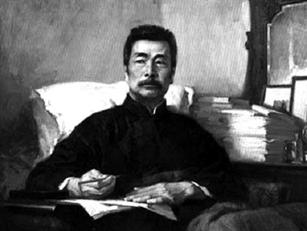
He was born in Shaoxing County of east China's Zhejiang Province on September 25, 1881 and died on October 9, 1936.
He gave up medical study in Japan in his 20s after realizing that it was more important to spiritually enlighten his compatriots rather than to cure their physical diseases.
Through his works, the master of irony produced harsh criticism on social problems in China.
Lu Xun contributed significantly to every modern literary medium except the novel during his lifetime. He wrote in a clear and lucid style which was to influence many generations, in stories, prose poems and essays.
Lu Xun's two short story collections, Nahan (A Call to Arms or Outcry) and Panghuang (Wandering), are often taken to mark the beginning of modern Chinese literature, and are established classics. Lu Xun's translations were important in a time when Western literature were seldom read, and his literary criticisms remain acute and persuasively argued.
Among his great works are "The True Story of Ah Q", "A Madman's Diary", "Kong Yiji" and "Medicine", which exposed the ugly side of feudal society and human nature and emancipated people's minds.
Lu Xun's works exerted a very substantial influence in China. Mao Zedong was a lifelong admirer of Lu Xun's works.
His works have been in textbooks for Chinese classes for years. A major literature prize in China, the Lu Xun Literary Prize is named after him. Asteroid (233547) 2007 JR27 was named after him. A crater on Mercury is named after him.
The works of Lu Xun has also received attention outside of China. In 1986, Fredric Jameson cited "A Madman's Diary" as the "supreme example" of the "national allegory" form that all Third World literature takes. Gloria Davies compares Lu Xun to Nietzsche, saying that both were "trapped in the construction of a modernity which is fundamentally problematic".
Though sympathetic to the ideals of the Left, Lu Xun never actually joined the Communist Party of China. (http://cpcchina.chinadaily.com.cn/2012-02/10/content_14577143.htm)
5) Shanghai Concession (International Settlement, French Concession)
公共租界,法租界
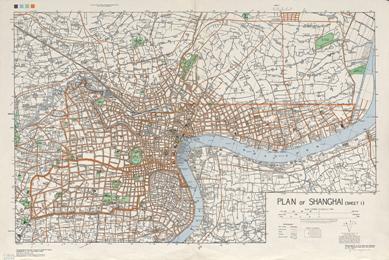
(The red line areas: left-bottom to the river is French Concession, the center-top area is International Settlement)
The “concession” (or settlement) was the district-sized colonies, tactically and centrally located inside major Chinese cities and across the country by different western imperialist powers after 1st Opium War at 1840 until 1940s. They have their own government and troops, taxation and financial systems. They’re the de-facto power controlled China’s destiny for hundred years, and many historical brutalities.
During the time of Opium War in the 19th century, due to the defeat of the corrupted Qing government, China was forced to sigh a series of unjust and humiliating treaties, which opened a new era of China’s backwardness and humiliation such as Treaty of Nanjing, Treaty of the Bogue, Sino-American Treaty of Wangsia. After the first Opium War the British named Shanghai a treaty port, opening the city to foreign involvement. Shanghai turned into a city carved up into autonomous concessions administered concurrently by the British, French, and Americans, all independent of Chinese law. Each colonial presence brought with it its particular culture, architecture, and society. (https://www.absolutechinatours.com/china-travel/Shanghai-History.html)
The Shanghai International Settlement (Chinese: 上海公共租界; pinyin: Shànghǎi Gōnggòng Zūjiè; Shanghainese: Zånhae Konkun Tsyga) originated from the 1863 merger of the British and American enclaves in Shanghai, parts of the Qing Empire held extraterritorially under the terms of a series of Unequal Treaties.
The settlements were established following the defeat of the Qing army by the British in the First Opium War (1839–1842). Under the terms of the Treaty of Nanking, the five treaty ports including Shanghai were opened to foreign merchants, overturning the monopoly then held by the southern port of Guangzhou (then known as Canton) under the Canton System. The British also established a base on Hong Kong under an extensive lease. American and French involvement followed closely on the heels of the British and their enclaves were established north and south, respectively, of the British area.
Unlike the colonies of Hong Kong and Weihaiwei, which were sovereign British territories, the foreign concessions in Shanghai originally remained Chinese sovereign territory. However, during the Small Sword Society uprising of 1853–55, the Qing government gave up sovereignty in the concessions to the foreign powers in exchange of their support to suppress the rebellion.[1] In 1854, the three countries created the Shanghai Municipal Council to serve all their interests, but, in 1862, the French concession dropped out of the arrangement. The following year the British and American settlements formally united to create the Shanghai International Settlement. As more foreign powers entered into treaty relations with China, their nationals also became part of the administration of the settlement, but it always remained a predominantly British affair until the growth of Japan's involvement in the late 1930s.
The international settlement came to an abrupt end in December 1941 when Japanese troops stormed in immediately following the attack on Pearl Harbor. In early 1943, new treaties signed by Chiang Kai-shek's Republican government formally ended the extraterritorial privileges of Americans and Britons, although its terms were moot until the recovery of Shanghai following Japan's 1945 surrender. The French later surrendered their privileges in a separate 1946 agreement. (https://en.wikipedia.org/wiki/Shanghai_International_Settlement)
The Shanghai French Concession (French: Concession française de Changhaï; Chinese: 上海法租界; Shanghainese: Zaonhe Fah Tsuka) was a foreign concession in Shanghai, China from 1849 until 1943, which progressively expanded in the late 19th and early 20th centuries. The concession came to an end in 1943 when the Vichy French government signed it over to the pro-Japanese puppet government in Nanking. For much of the 20th century, the area covered by the former French Concession remained the premier residential and retail district of Shanghai, and was also one of the centres of Catholicism in China. Despite re-development over the last few decades, the area retains a distinct character, and is a popular tourist destination. (https://en.wikipedia.org/wiki/Shanghai_French_Concession)
6) Hospital/Community Clinic Visit
Founded in 1954, SHNU was then named Shanghai Teachers Training College. In 1956 it was expanded into two colleges, Shanghai No. 1 Teachers College and Shanghai No. 2 Teachers College. Two years later, the two colleges were combined to form Shanghai Teachers College.
From 1972 to 1978, it was known as Shanghai Normal University after combining 4 other ones including East China Normal University. In 1978 it was restored to Shanghai Teachers College, and was renamed as Shanghai Teachers University in 1984. It combined with Shanghai Teachers College of Technology in October 1994 to form a new Shanghai Teachers University, whose English version was changed into Shanghai Normal University (SHNU) on May, 2003. From September 1997 to August 2003, the university took in successively the following units as its subordinates: Shanghai Teacher Training College, Department of Human Sanitation and Health of Huangling Teacher School, Shanghai Xingzhi Art School, and Shanghai Tourism Institute. Also located in SHNU are, among others, Shanghai Teachers Training Center, Shanghai College Teachers Training Center, and the Editorial Department of Academic Abstracts of Liberal Arts of College Journals. ( http://www.shnu.edu.cn/Default.aspx?tabid=5181)
SHNU now has two campuses, Xuhui and Fengxian, covering an area of over 1,620, 000 square meters (about 400 acres), 59, 000 square meters (about 14.58 acres) of classroom area, 281, 000 square meters (about 69.43 acres) of students dorm, and square meters (about 19.52 acres) of lab and self-learning room.
The two campus libraries boast 3.3375 million books, about 100 electronic library data bases and 4 characteristic data bases. The Shanghai University Ceramics Museum founded in SHNU is among one of the 10 largest of its kind in Shanghai. It has been named the title of China National Key Protection Site by the State Council of China for its storage of over 100, 000 ancient books. The sum value of fixed assets in SHNU is 2.157 billion Yuan RMB (about 348 million USD), and 637 million Yuan RMB (about 102 million USD) for education and scientific equipment.
There are now 22, 302 undergraduates, 5, 065 postgraduates, and 12, 404 night school students now learning in SHNU.
SHNU boasts a high-quality academic staff of 2,845 teachers and researchers, including 1,696 full-time teachers, among which there are 259 professors and 567 associate professors. Among the faculty members, 1,346 (79.36%) are master’s or doctor’s degree holders, among whom 685 are doctoral degree holders. In addition, the university has about 597 part-time teachers, including 5 specially employed academician-level professors and over 100 foreign teachers. (http://www.shnu.edu.cn/Default.aspx?tabid=5182)
8) Shanghai SHNU Chinese “Comfort Women” History Museum
上海师范大学中国“慰安妇”历史博物馆
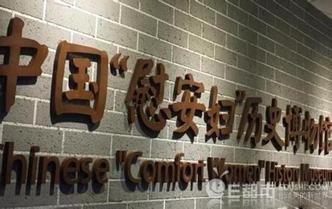
The country's first-ever museum dedicated to "comfort women" opened to the public on Friday at Shanghai Normal University.
The archive, which tells the stories of the sex slaves kept by Japanese soldiers during World War II, was expected to greet some 300 visitors a day on its opening weekend.
Guests of honor on Friday were three former comfort women from Shanxi and Hainan provinces and the Guangxi Zhuang Autonomous Region. They attended the opening ceremony and each delivered a speech recounting their ordeals. Two consuls from the Japanese consulate-general in Shanghai also visited on Friday.
As well as hearing the women's accounts, visitors were able to look at 48 display boards and 80 objects relating to the period.
"The wooden sculptures of Mount Fuji taken from the Daiichi Salon in Shanghai, the world's first comfort station set up by the Japanese, is one of the most valuable items on display," Su Zhiliang, director of the Chinese Comfort Women's Research Center at Shanghai Normal University and founder of the museum, said.
Other exhibits include recordings and written accounts by comfort women; the disinfectants Lei Guiying took with her when she fled the brothel in Nanjing where she was forced to work; boxes of condoms; and pictures of Japanese soldiers.
The museum is the third of its kind in the world. The others are in Tokyo and Seoul.
According to Su's research, there were about 200,000 comfort women in China, but just 47, who have publicly declared it, are still alive.
One of the three comfort women at the opening ceremony, 78-year-old Wan Aihua from Shanxi Province, said: "I have the courage to stand up as the first to confess I was a comfort woman, because I want to ask for compensation on behalf of myself and all my sisters."
Nanjing documentary
The documentary film Nanking had its premiere in Guangzhou on Thursday.
"Its American director Bill Guttentag attended the premiere and we had a full house," Yang Weibing, director of the Guangzhou-based Feiyang Cinema, said.
The movie has been on show in cinemas throughout Guangzhou, in most cases being shown five times a day.
"The audience at the premiere was full of passion," Wu Jiemin, an office worker who saw the screening, said. She said it was well balanced and that it was good that the world would hear the story of the tragic event. (http://www.chinadaily.com.cn/china/2007-07/07/content_912318.htm)
9) Shanghai Pudong/ Zhangjiang Hi-Tech Park
上海浦东/张江高科技园区
http://english.pudong.gov.cn
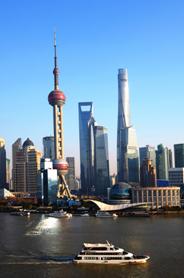
Pudong stands on a new starting point of development and embraces historic opportunities after the establishment of China (Shanghai) Pilot Free Trade Zone. It will have "strong motivation, bold innovation, rational process and inclusive mentality", prioritize the quality of development, streamlining of institutions, upgrade of functions, and balanced development, push forward second-round development, and reach new height. By 2020, Pudong New Area will become a forerunner of scientific development, a core functional area of Shanghai's "Four-Centers Initiatives", a pilot area of comprehensive reforms and a an open area of harmonious ecology. By then, it will truly become a forward-looking modern urban area with multiple functions.
By the end of 2015, GDP growth in Pudong will be 1 to 2 percentage points higher than Shanghai average. The added value from tertiary industry will account for 65% of local GDP. Fiscal revenue is projected to be growing at the same rate. Total investment in fixed assets, over a period of five years, will mounted to 800 billion yuan. (http://english.pudong.gov.cn/html/pden/pden_ap_oop_pi/2014-05-28/Detail_74364.htm)
Formerly known as Shanghai Zhangjiang Hi-Tech Park Development Company, was approved the same day ZJ Park was established. ZJ Group was the fourth key regional development company of Pudong New Area after Waigaoqiao Free Trade Zone Development Company, Jinqiao Export Processing Zone Development Company, Lujiazui Financial and Trade Zone Development Company. The strategic vision of ZJ Group is to become the developer, service provider, operator as well as the leader in technological innovation and industrial investment of a world-class innovation park. |

